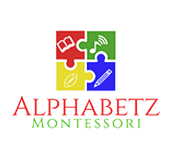Selecting the Best Infant Program: A Parent’s Guide
Selecting the Best Infant Program: A Parent's Guide Choosing the right infant program for your child is a significant decision that can impact their early development and set the foundation for lifelong learning. As parents, understanding your child's needs, researching potential programs, and making an informed decision are crucial steps in this process. This guide aims to help you navigate these steps with confidence. Understanding Your Child's Needs Before diving into the search for the perfect infant program, it's essential to have a clear understanding of your child's unique needs. Consider the following: - **Child's Temperament:** Is your child easy-going or do they need more time to adapt to new situations? Knowing this can help you choose a program that matches their comfort level. - **Learning Style:** Some children are visual learners, while others learn best through touch or movement. Look for programs that cater to your child's learning style. - **Special Needs:** If your child has any special needs, ensure the program has the necessary resources and trained staff to provide the support they require. Aligning your child's needs with the offerings of an infant program is crucial for their happiness and development. Researching Infant Programs The search for the right infant program can begin with: - **Online Resources:** Websites and social media groups can provide insights into various programs. - **Parent Forums and Local Community Boards:** These can offer personal experiences and recommendations. - **Accreditation:** Ensure the program is accredited, indicating it meets certain quality standards. - **Curriculum:** The curriculum plays a vital role in your child's development. Look for programs that offer a balanced approach to learning. Visiting Potential Programs When visiting programs, pay attention to: - **Cleanliness and Safety Measures:** The health and safety of your child are paramount. - **Interaction Between Caregivers and Children:** Positive and engaging interactions are a good sign. - **Staff Qualifications:** Qualified and experienced staff are crucial for your child's development.…










